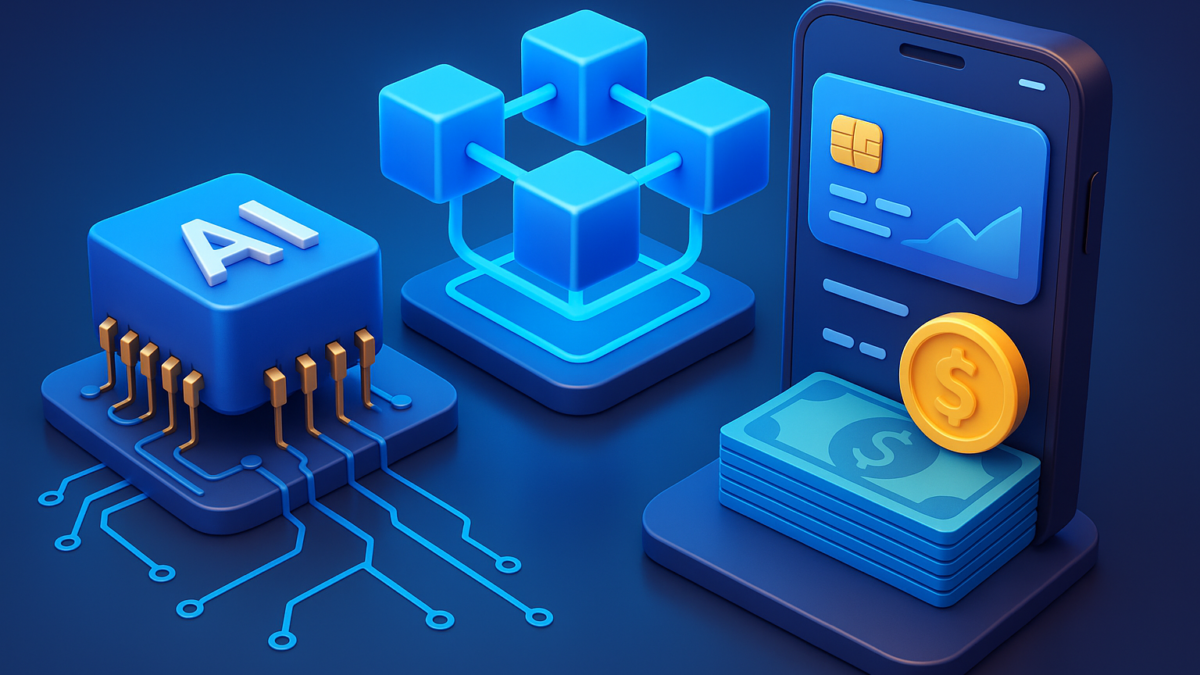FinTech Innovations in 2025: AI, Blockchain, and Next-Gen Banking
The FinTech landscape is evolving faster than ever. By 2025, AI, blockchain, and next-generation banking technologies are revolutionizing how consumers and businesses handle money.
From smarter payments to automated lending and enhanced financial security, FinTech innovations are reshaping the global financial ecosystem. This article explores the latest trends and technologies driving the FinTech revolution.
1. AI-Powered Financial Services
Artificial intelligence is at the forefront of FinTech innovation.
Applications:
- Predictive Analytics: AI predicts market trends and customer behavior.
- Robo-Advisors: Automated investment platforms provide personalized advice.
- Fraud Detection: AI models detect unusual transactions in real-time.
- Credit Scoring: Machine learning algorithms assess creditworthiness more accurately than traditional models.
Example: Banks use AI-driven chatbots to handle customer queries 24/7, reducing operational costs and improving satisfaction.
2. Blockchain and Decentralized Finance (DeFi)
Blockchain is transforming transactions, lending, and asset management.
Key Innovations:
- Smart Contracts: Automate agreements and reduce intermediaries.
- Cryptocurrencies & Stablecoins: Enable faster, borderless payments.
- Decentralized Lending Platforms: Peer-to-peer lending without traditional banks.
- Tokenization of Assets: Allows fractional ownership of real estate, art, and other investments.
Impact: Blockchain increases transparency, security, and efficiency in financial transactions.
3. Digital Banking & Neo-Banks
Traditional banking is giving way to digital-first financial institutions.
Features:
- Fully app-based banking experiences
- Instant onboarding and account setup
- Integrated budgeting, investments, and payments
- AI-driven financial insights
Trend: Neo-banks and digital wallets are attracting younger customers who prefer seamless, tech-driven financial experiences.
4. Embedded Finance
Embedded finance integrates financial services directly into non-financial platforms.
Examples:
- Buy Now, Pay Later (BNPL) integrated into e-commerce sites
- Payment gateways within social media platforms
- Insurance offerings embedded into travel and retail apps
Benefit: Businesses can offer frictionless financial solutions, increasing customer retention and engagement.
5. Cybersecurity & Privacy in FinTech
As FinTech grows, so do security and privacy concerns.
Emerging Solutions:
- Multi-layered authentication (biometrics, MFA)
- AI-powered fraud detection
- Secure encryption protocols for transactions
- Compliance with GDPR, CCPA, and other regulations
Pro Tip: Investing in cybersecurity is no longer optional—it’s critical for trust and regulatory compliance.
6. Future Trends in FinTech
Looking ahead to 2025 and beyond:
- AI-driven personalized banking: Tailored financial recommendations in real-time
- Quantum-safe encryption: Protecting financial data from future quantum threats
- Cross-border payments innovation: Faster, cheaper, and fully digital transfers
- Sustainable finance: AI-powered tools for ESG investment tracking
Conclusion
FinTech in 2025 is defined by AI, blockchain, digital banking, and embedded finance. Businesses that adopt these innovations will improve efficiency, enhance customer experiences, and remain competitive in a rapidly evolving financial landscape.
Call-to-Action (CTA)
Share your FinTech expertise and insights globally! Leverage iTMunch’s B2B Content Syndication Services to distribute your FinTech articles and research across 1,500+ platforms, reaching over 1 million professionals worldwide.
Start syndicating smarter and expand your industry influence today!





